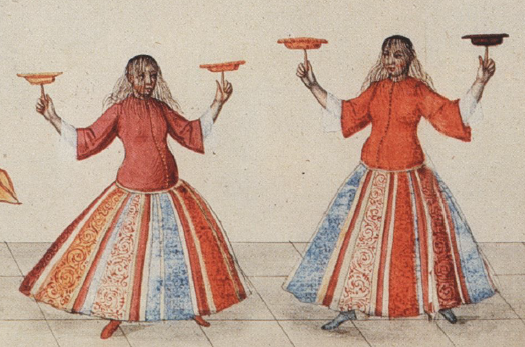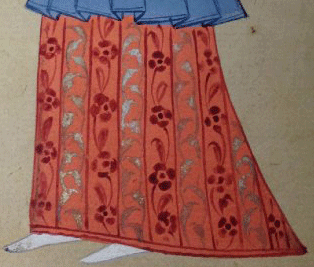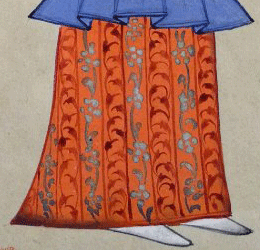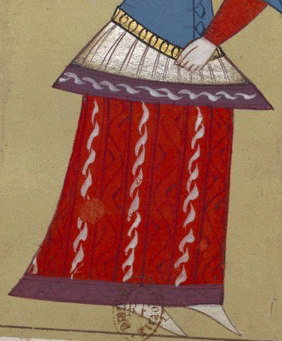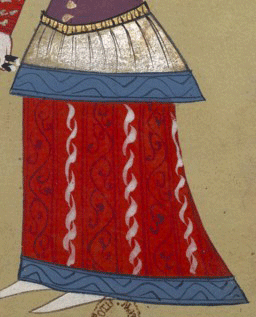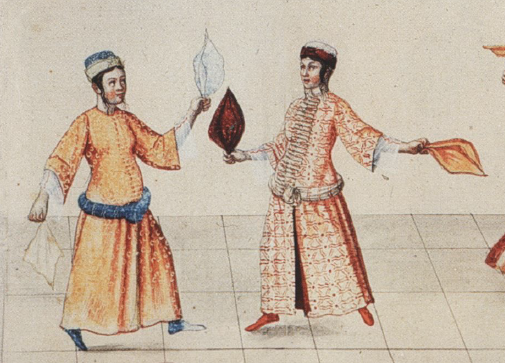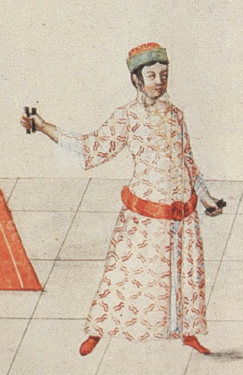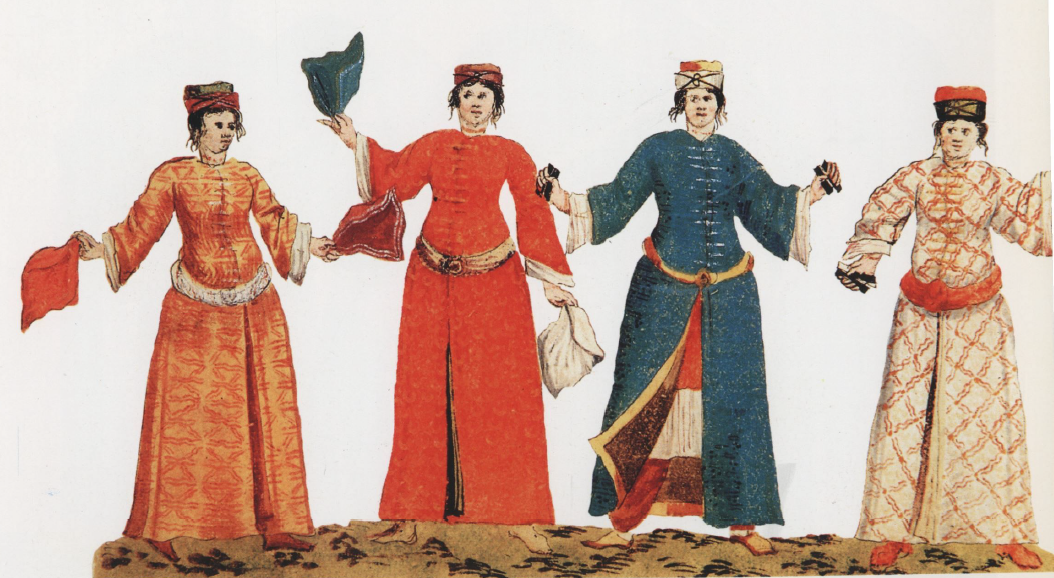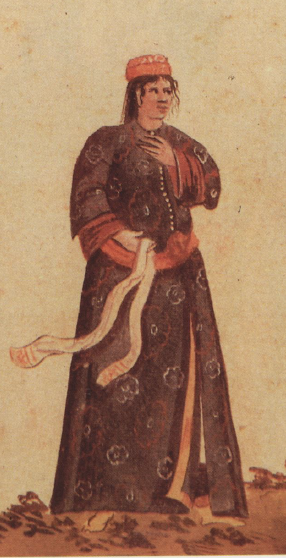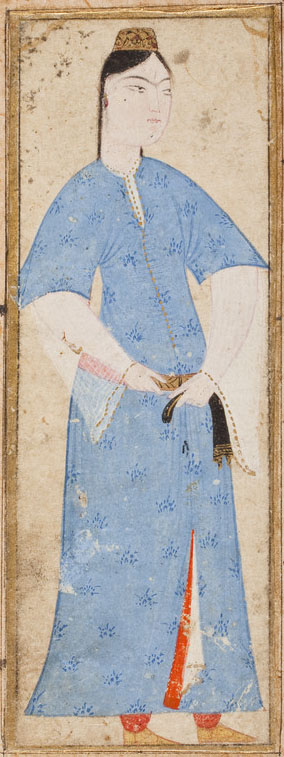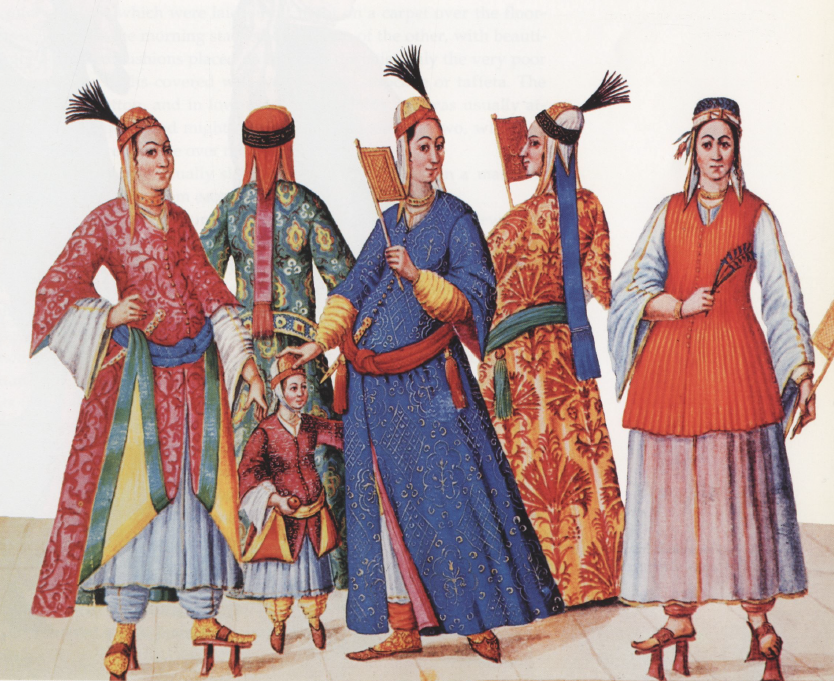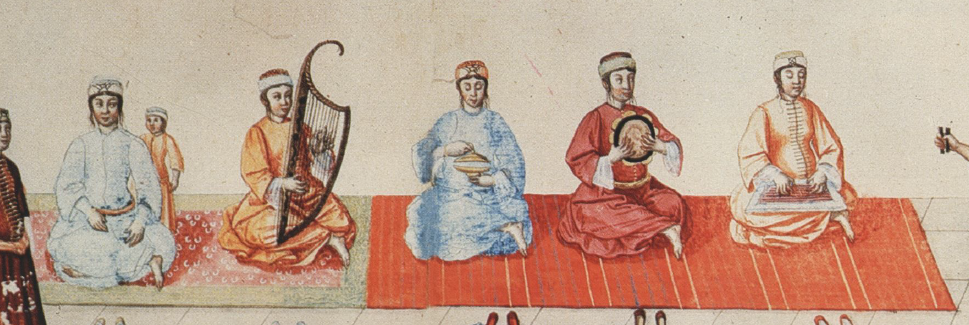Museum collections around the world can show you, in exquisite detail, how the richest of the richest Ottoman Turks decorated their clothes. What about the middle and working classes? Pattern-woven and printed cottons were mainstays of the textile trade, but only a tiny handful made it into museum collections, and then only in styles worn at court. Traditional Indian and Persian patterns are recorded as being woven into wool, silk, and even cotton and linen, but again, they’re missing from extant garments. How are we to recreate these lost patterns?
Some of the patterns were recorded by artists… with varying levels of skill and accuracy, in pictures a few inches high. But it’s a record, dammit. When I come across a patterned textile from a reasonably accurate source, I get the best available reproduction of it and store it here, in the hopes that reenactors will be able to get at least a sense of the world of pattern and color now lost to us.
Dancing Skirts
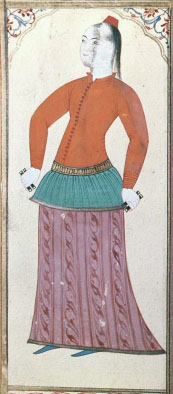 Both dancing boys and dancing girls wore distinctive two-tiered skirts when they performed. The boy to the right, from the Album of Ahmed I (c. 1610), is shown in the complete outfit, with a ruffled hip skirt and a striped full-length skirt. A number of artists, both Turkish and European, drew stylized renditions of the striped designs.
Both dancing boys and dancing girls wore distinctive two-tiered skirts when they performed. The boy to the right, from the Album of Ahmed I (c. 1610), is shown in the complete outfit, with a ruffled hip skirt and a striped full-length skirt. A number of artists, both Turkish and European, drew stylized renditions of the striped designs.
I’m not sure whether the designs were in general use, or whether they were used only on dancing skirts.
Professional dancers balancing plates, drawn by European artist Wehme Zacharias in c. 1582:
Bazaar paintings from c. 1618-1625:
Kaftans
Women dancing at a ladies’ party, drawn by European artist Wehme Zacharias in c. 1582:
The woman on the left wears a pattern of triple çintamani, and the woman on the right wears a pattern of dots (or a single çintamani?) joined by a lattice of tiger stripes. A woman on the other side of the drawing wears a similar pattern:
Johannes Lewenklaw must have spent time with the same models, because in c. 1585 he drew two whose kaftans are identical to ones drawn by Wehme Zacharias. The woman on the far right is identical to the woman above, and the woman in the orange kaftan is identical to the woman in the first picture, on the left. (Click on the picture to see it full-size, then squint–the triple çintamani motif is faint.)
Another patterned kaftan drawn by Johannes Lewenklaw:
Scattered blue-on-blue sunburst? floral? designs in a late 16th-century painting from a court album:
A wealth of patterns from the Codex Vindobonensis 8626, circa 1590:
Rugs
Professional musicians performing at a party, drawn by European artist Wehme Zacharias in c. 1582:




